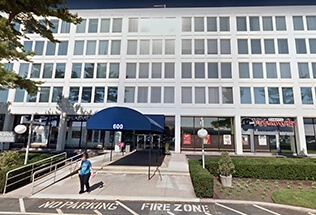Assessing damages in a personal injury case is crucial to help you build your claim and calculate the amount of compensation you are entitled to. Understanding the types of damages that can be covered through a personal injury claim is very important in ensuring you can maintain your rights.
Damages in personal injury are not just medical expenses or other financial losses. If you or a loved one have been injured in an incident, you may be eligible to receive monetary compensation for any pain and suffering you endured as a result.
Pain and suffering damages are not the same as medical and physical injuries, although they may be caused as a result. Pain and suffering refer to mental and physical pain that persists after an incident or injury occurs.
For a better idea about whether you can claim pain and suffering damages for your personal injury lawsuit, we suggest you consult with a skilled lawyer without delay.
To that end, you can speak with one of the seasoned personal injury attorneys at Schwartzapfel Lawyers when you call 1-516-342-2200 or visit us online today. Note: While your consultation will be free, the advice you receive may save you miles of headache, heartache, and financial strain down the road.
What Is Pain And Suffering In Personal Injury Law?
Pain and suffering differ from injuries and other financial or physical losses after an incident. In personal injury law (also known as tort law), pain and suffering encompass physical and/or mental discomfort following an incident or loss.
Pain and suffering occur due to an injury or incident, leading to loss of enjoyment and/or decreased ability to engage in daily activities (e.g., doing the dishes, taking out the trash, driving a car, dressing oneself, etc.).
Accident victims can claim two (2) main types of pain and suffering through a personal injury case. Pain and suffering can refer to mental anguish or bodily injury and brain injury. The following is an overview of each type of physical and emotional pain and a few ways they can impact an individual.
Physical Pain And Suffering
Under personal injury, pain and suffering encompass physical pain that an afflicted individual experiences due to their injuries. This can refer to the pain an individual suffers during an incident or while injured or to the pain they suffer in the aftermath of an incident.
Even after an injury is treated, an individual may continue to be in pain and undergo complications caused by an incident.
Below are some examples of causes that can result in physical pain and suffering:
- Painful injuries such as head trauma, broken bones, burns, or deep lacerations.
- Persisting strains and body aches as a result of impact trauma in an incident.
- Decreased mobility or increased pain as a result of a procedure to treat an injury. This can include procedures like kneecap replacements.
- Injuries such as spinal cord injuries that lead to long-term impairment or disability.
As shown, physical pain and suffering do not only apply to injuries sustained in an incident. They also include any negative physical effects it causes.
To learn more now at no charge, call Schwartzapfel Lawyers at 1-516-342-2200 or visit us online to schedule your free consultation today.
Emotional Distress
Mental pain and suffering can be caused by incidents that result in physical injuries and other losses. Many people are unaware that emotional and mental distress is covered under personal injury. You can receive financial compensation for mental damages if you can provide evidence of them and relate them to the incident.
Symptoms of emotional distress can include but are not limited to:
- Fear, stress, and/or anxiety.
- Insomnia or irregular sleeping patterns.
- Inability to focus on day-to-day tasks.
- Fatigue or lack of energy.
- Body aches, nausea, and/or irregular heartbeat.
Pain and suffering can be caused by all types of incidents. For example, an afflicted individual may suddenly fear driving due to anxiety after a car accident.
If you exhibit any signs of physical or mental pain and suffering after an incident, a seasoned lawyer can guide you through the necessary steps to file your claim. To get started, you can reach out to the skilled personal injury lawyers at Schwartzapfel Lawyers by calling 1-516-342-2200 today.
Different Types Of Damages
Under the law, personal injury is defined by various losses that can afflict a party or individual. Because of this, different types of damages can go into a personal injury case.
Becoming familiar with them can help you better understand what types of damages may apply to your case.
Compensatory Damages
Compensatory damages are damages that can be claimed through a personal injury case. They function to provide afflicted individuals with monetary compensation for their losses.
To wit, there are two (2) main types of compensatory damages:
- Economic Damages: Economic or monetary damages refer to financial losses after an incident or injury. They include medical expenses like medical bills for medical treatment, lost wages, property damage, and other costs that are sustained by an afflicted party.
Because most costs and expenses can be documented, calculating a dollar amount for economic damages in a case is often easier than calculating the amount of money you can expect for other types of damages.
- Non-Economic Damages:Non-economic damages are the non-financial losses that result from an incident or injury. They include physical impairment, disability, loss of consortium, loss of society, loss of enjoyment of life, and pain and suffering.
Calculating pain and suffering damages or other non-economic damages is not easy, even for severe injuries. Compensation is awarded based on the severity of your injuries or other suffering.
Depending on the economic and non-economic losses sustained in an incident, injury victims may be able to claim both economic and non-economic damages.
The right lawyer can help you or your loved one determine how much compensation you can expect to receive once your pain and suffering claim is settled. You can speak with one of the skilled personal injury lawyers at Schwartzapfel Lawyersby calling 1-516-342-2200 today. Alternatively, you can schedule your free consultation when you visit us online now!
Punitive Damages
Punitive damages, also called exemplary damages, hold an at-fault party accountable for their actions. They are only used if the defendant’s actions that lead to an incident are deemed especially harmful or malicious, such as medical malpractice.
While punitive damages are a significant part of criminal law, they are also often applied to personal injury cases. For example, a car accident case in which the at-fault driver was drunk or intoxicated may be a case in which punitive damages are assigned.
Unlike compensatory damages, an afflicted party cannot claim punitive damages. They are instead awarded by a judge or the court if necessary.
While punitive damages are not as commonly awarded as compensatory damages, there are certain circumstances in which they are enforced. For any questions about punitive damages and what they apply to, a seasoned attorney at Schwartzapfel Lawyerscan help. For more information, call 1-516-342-2200 now!
Claiming Pain And Suffering Damages
If you have suffered pain and suffering from an incident, you may be eligible to receive coverage for it alongside other physical or financial losses. However, proving pain and suffering in a case is not always easy.
To claim damages in a personal injury case and receive compensation for your losses, you must provide evidence of those damages to an insurance company or the court. This applies to all types of damages, including pain and suffering.
Evidence of pain and suffering damages can include but is not limited to:
- Medical records detailing physical pain, discomfort, or impairment sustained by the afflicted individual and the severity of the injury.
- A mental health evaluation from a therapist or psychiatrist describing the afflicted individual’s mental condition and its relation to an incident.
- Witness statements from friends, family members, neighbors, or colleagues who can testify that the claimant has been physically or mentally impacted by an incident.
- Testimony from a doctor or mental health professional on how an incident could have led to physical and mental pain.
Quality Of Life Considerations
You must also prove that the mental and physical pain and suffering you are experiencing have adversely affected your quality of life.
For example:
- Trauma to your muscles or back from falling during an incident may prevent you from performing tasks at work.
- Pain or stiffness after a procedure may decrease your mobility and therefore prevent you from doing normal activities like exercising.
- A burn injury may lead to severe anxiety and fear that can prevent you from doing things like cooking.
- Permanent disability or disfigurement after an incident can hinder your physical activity and lead to emotional trauma, post-traumatic stress disorder (PTSD), and depression.
How Schwartzapfel Lawyers Can Help
To recover pain and suffering damages, not only must you show evidence for them, but you must also be able to prove that they were caused by the negligence of an at-fault party.
To do so, you must establish that an at-fault party’s failure to uphold certain duties or guidelines was what led to an incident or loss.
The team at Schwartzapfel Lawyerslaw firmis equipped with all the necessary resources to help you prove your losses and gather evidence against a negligent party. To find the right lawyer for you, call 1-516-342-2200 for a free consultation today.
But you shouldn’t wait, as your window to file a claim and recover all the money and benefits you are entitled to may soon close forever. To keep that from happening, allow Schwartzapfel Lawyers the honor and privilege of fighting – and winning – for you!
Call now!
DISCLAIMER: Nothing on this page should be considered legal advice. You should seek the appropriate counsel your situation requires. For more information, call 1-516-342-2200 now!
Sources:
Schwartzapfel Lawyers, P.C. | Fighting For You™™
Pain and Suffering – Legal Information Institute | Cornell Law School
What is ‘Pain and Suffering’ in a Personal Injury Case? | Nolo Legal Encyclopedia
Non-Economic Damages: Definitions, Examples, and Limits | LegalMatch
What Is Pain And Suffering? Definitions And Examples | Forbes Advisor
















